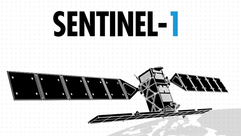Ground Deformation Monitoring in Mining Areas on the Central Andean Plateau (Puna, Argentina) Using Sentinel-1 Data

Mohammad Javad Eghbali Zarch (Erfolgreiche Fertigstellung März 2019)
Kooperationsprojekt mit Potsdam Universität: Prof. Bodo Bookhagen
Central Andean plateau is located in “Lithium triangle” in Argentina, which holds 75% of the Lithium reserves and resources in the world, producing 12% of the Lithium worldwide. A broad range of mining activities in this area causes ground deformation. Monitoring this phenomenon is of high importance to assess the safety for human population, environment and infrastructure, including gas and oil pipelines in the area. In this study, ground deformation is monitored by processing Sentinel-1 images from 2014 to 2018, using Interferometric Synthetic Aperture Radar (InSAR).
For each selected pair of SAR images, phase interferograms are generated using GMTSAR as an open source InSAR processing system. Then, an advanced algorithm of Goldstein filtering is applied to reduce phase residues by smoothing the intensity of Fourier-transformed samples in overlapped interferogram patches. Unwrapping is performed by Snaphu to relate the topographic height and the interferometric phase. Line of sight (LOS) deformation maps are generated accordingly. As a result, by taking the incidence angle of each pixel of LOS deformation maps, vertical deformation maps are produced. Furthermore, the orbital ramp effect is removed by detrending the interferograms.
To reach the deformation rate, Small Baseline Subset (SBAS) is applied as a multi-temporal InSAR methodology to extract time series of ground deformation. The results of SBAS analysis are presented as deformation maps, plots and velocity map of vertical deformation in MATALB. Further, the effects of water vapor and atmospheric waves on the interferograms are investigated.
Overall, areas under mining activity are detected as the zones with subsidence, however, areas where there is no pumping effect are stable zones. By generation of the velocity map of vertical deformation, areas with subsidence rate up to 20 mm/year is detected.
